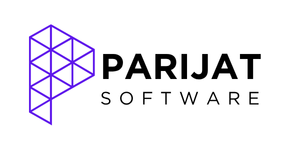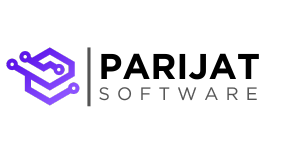Beyond ChatGPT: Turning Your Proprietary Data into a Private AI Powerhouse
Many executives assume that “using ChatGPT” equals having an AI strategy. It doesn’t. The real competitive edge comes from pairing a strong base model with your own private data, safely held inside your own walls. Enterprises that fine-tune a large language model (LLM) on their proprietary documents and layer it with a vector database for real-time retrieval are already seeing sharper answers, tighter compliance and in many cases lower operating cost than public-only APIs.
Why Generic ChatGPT Falls Short for the Boardroom?
Executives love the speed of a public chatbot, but the moment the conversation touches audited numbers, customer PII or emerging regulation, the cracks show. Here’s why most boards now see generic ChatGPT as a Proof-of-Concept, not a production solution.
- Data control & confidentiality
Every prompt sent to public ChatGPT is processed and retained for up to 30 days on OpenAI’s servers, putting sensitive board material outside your perimeter. Many organizations has already limit the usage of ChatGPT on proprietary data. A private, self-hosted LLM keeps all tokens, logs and encryption keys on infrastructure you already govern. - Regulatory & data-residency pressure
The EU AI Act and similar rules treat many corporate chat-assistants as “high-risk,” demanding full audit trails and local data storage. Canadian PIPEDA likewise obliges firms to track exactly where personal data travels beyond national borders. Running the model inside your own VPC or on-prem rack short-circuits cross-border transfer reviews and accelerates compliance sign-off. - Knowledge cut-off
Public models stop learning at their last internet crawl, so they can’t see yesterday’s earnings deck or today’s incident report and will often “guess” to fill gaps. Without live access to proprietary documents, their advice drifts from reality just when executives need precision. A private LLM paired with an internal vector database feeds real-time company facts into every answer. - Accuracy & hallucination risk
A study of 4,900 paper summaries showed LLMs oversimplified or mis-stated findings up to five times more often than domain experts. Newer “o4-mini” builds actually hallucinated more than earlier versions, proving that bigger updates don’t automatically fix reliability. In finance, law or medicine, a single fabricated figure can trigger material mis-statements or patient-safety events.. risks boards cannot tolerate.
Private deployments make it possible to enforce grounding, attach source excerpts, and insert human approval loops before responses leave the building. - Cost predictability
Usage-based public APIs can swing from a few cents to hundreds of dollars per user once token volumes climb, complicating board-level budget planning. By contrast, hosting a distilled model shifts spend to a fixed GPU footprint and lets finance teams lock in multi-year TCO. Several Fortune-500 pilots have reported breakeven in under nine months at enterprise chat scale. - Governance & auditability
Public LLMs remain a black box: security leads can’t inspect training data, rule out bias, or reproduce the chain of thought behind a sensitive answer. Only 30 % of multinationals say their off-the-shelf generative-AI systems fully satisfy global governance standards.
Private stacks let you log every token, enforce role-based access, and export evidence directly into SIEM or GRC tooling, capabilities regulators will soon expect by default. They also simplify “right to be forgotten” and audit-trail requests because you own the storage, not a third-party vendor.
Private ChatGPT: A Strategic Asset
Your own ChatGPT-style assistant, running in a VPC or on-prem GPU box, changes the equation:
- Data never leaves the perimeter. Keeping the model behind your firewall satisfies GDPR cross-border rules and shortens SOC 2 audits because you control the logs, encryption keys and retention windows.
- Answers sound like your company, not the internet. Fine-tuned models learn brand tone, product naming and internal acronyms, reducing editing loops and protecting voice consistency in everything from investor memos to support emails. 92 % of enterprises report measurable accuracy gains after fine-tuning.
- You capture the feedback loop. In a private stack, every chat, correction and rating becomes first-party data you can pipe into nightly PEFT jobs, continuously hardening the model against real-world edge cases. Unlike public SaaS tools—where your usage helps improve someone else’s model—this virtuous cycle builds a moat around your own institutional knowledge.
- Regulators sleep easier. Hosting the full pipeline behind your firewall lets compliance teams satisfy GDPR localisation, HIPAA and forthcoming EU-AI-Act audit-trail demands without negotiating special clauses with an external vendor. Because you own the logs, encryption keys and retention policies, SOC 2 evidence collection shrinks from months to days, and custom redaction or regional-shard rules can be enforced at the infrastructure layer instead of tacked on post-hoc.
Fine-Tuning: Turning Generic Intelligence into Proprietary Insight
Fine-tuning means taking a strong open-source model (Llama-3, Mistral, Gemma) and training it further on your call transcripts, SOPs or schematics so it speaks with hard-earned institutional knowledge.
- Sharper relevance. A Lamini Memory-Tuning study cut hallucinations from 50 % to just 5 % after a single domain-specific fine-tune run, showing how quickly precision jumps once the model ingests proprietary context. Having proprietary to train LLM is one of the biggest advantages to levrage the power of AI.
- Smaller, faster models. Techniques like LoRA and QLoRA let teams distill huge models into lighter versions that still outperform stock GPT-4 on niche work, slashing GPU hours. QLoRA demonstrates that a 65-billion-parameter model can be fine-tuned on one 48 GB GPU by quantising weights to 4-bit and attaching lightweight adapters—an ~80 % memory savings with no quality loss.
- Language and compliance fit. Banks are already fine-tuning LLMs on Basel III clauses, AML playbooks and policy FAQs so staff get instant, source-linked compliance answers. Pharma teams feed IND dossiers and clinical-protocol updates, while manufacturers load equipment manuals, giving the model the vocabulary to surface part numbers and safety steps without ever touching the public internet.
- Living documentation. By rolling monthly fine-tune jobs, your knowledge base stays in sync with product releases and policy changes without rebuilding an entire chat app.
- Proven case study. AT&T’s hybrid stack distills GPT-4 into three smaller models, retains 91 % accuracy and processes 40 M calls four times faster a blueprint any enterprise can follow.
Vector Databases: Making the Model Think in Real-Time
Even a fine-tuned brain needs fresh facts. A vector database (Milvus, Chroma, Weaviate) stores your PDFs, tickets and spreadsheets as embeddings so the model can pull the right snippets at answer time, an approach called retrieval-augmented generation (RAG).
- Up-to-the-minute answers. Instead of waiting weeks for the next tuning run, RAG injects yesterday’s policy update or this morning’s earnings sheet straight into the prompt. PayPal, Airbnb and Landing AI already run Milvus for exactly this reason.
- Explainability built-in. Because the vector store returns source passages, every claim can be back-linked to the originating document, catnip for auditors and risk teams.
- Scales like search, not chat. Vector DBs shard horizontally; embeddings are tiny, so infra costs stay predictable even if document count explodes.
Agentic AI: From Single Answers to End-to-End Execution
Your data-private chatbot shouldn’t stop at “answering questions.” The real upside comes when the model acts like an assistant that can execute multi-step tasks on your behalf, securely inside your walls. This emerging pattern is called Agentic AI.
- Workflow-level intelligence. Instead of returning a paragraph for a human to copy-paste, an agentic model can draft an email, file a support ticket, update a CRM field, or trigger an RPA bot—without the data ever leaving your perimeter. Fujitsu’s Private GPT v1.3 integrates “agentic” capabilities straight into on-prem deployments so teams automate work while keeping IP in-house.
- Universal connectivity via MCP. The Model Context Protocol (MCP) acts as a secure, plug-and-play bus between your Private LLM and existing apps.. databases, ERP, KM systems, even IoT streams. MCP is open-source and free, so you avoid vendor lock-in while still enforcing enterprise-grade auth and audit.
- Data sovereignty by design. Both the agent and MCP run on your own hardware or VPC GPUs; every chunk of content is processed locally, satisfying GDPR, HIPAA, and upcoming EU AI-Act controls without extra paperwork.
When an executive asks, “Can we summarise last quarter’s incidents and email the action list to Ops?”, the agent does it: cross-referencing the vector store, drafting the memo, and scheduling the follow-up, all under your governance umbrella. That’s not just productivity; it’s a controllable, auditable extension of your workforce.
What It Takes to Stand Up a Private LLM? Without Drowning in Tech Talk
- Pick a base model. Open-source leaders (Llama 3-70B, Mistral-8x22B, Gemma-27B) give you weights plus permissive licenses for commercial use.
- Secure the runtime. Spin up GPU nodes in your AWS/GCP VPC or slide servers into the data-center rack; wrap them with Kubernetes or Nomad for autoscaling.
- Prepare the data. Red-line sensitive fields, convert docs to clean text, then embed into a vector store. PEFT fine-tuning jobs run overnight on a subset of GPUs to control spend.
- Add a guardrail layer. Define banned outputs, profanity filters and rate limits right in the orchestration tier, no extra SaaS needed.
- Expose an API, not a science project. Business apps still call the model via HTTPS; nobody needs to know how many GPU cores are humming underneath.
- Wrap it with an open-source Chat UI. Spin up a self-hosted interface (Chainlit, Open WebUI, Lobe Chat) so executives can test the model in minutes… no Postman skills required.
Ready to Unlock Your Private Data’s Full Potential?
At Parijat Software, we’ve helped security-minded organizations stand up private ChatGPT-style assistants that keep IP on the inside, boost precision and cut recurring AI spend. If data privacy matters to your board, let’s talk about setting up your own fine-tuned LLM and vector database. No black boxes, just tangible business value.
Let’s build your unfair advantage.








